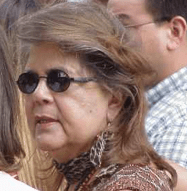“Gadugi, or working collectively for the common good, is an abiding attribute of the Cherokee culture.” [Wilma Mankiller]
Wilma Mankiller’s life is a record of her belief in working for the collective good no matter the cost. Consider the list of her ailments:
myasthenia gravis, a neuromuscular disorder
lymphoma
kidney failure (saved by her brother’s donation of a kidney)
a head-on collision (requiring 17 operations and years of physical therapy)
pancreatic cancer (which eventually caused her death)
Now consider her achievements. Wilma Mankiller founded a community development department for the Cherokee Nation, developing rural water systems and rehabilitating houses for tribal members. Her successes led Ross Swimmer, a principal chief of the Cherokee Nation, to select her as his running mate and later she became the first woman to serve as chief of the Cherokee Nation. When she ran for re-election, she received 83 percent of the vote. During her ten years heading the second largest tribe in the United States, membership grew from 68,000 to 170,000.
Her early inspiration came from the time she spent in San Francisco. Relocated by the Bureau of Indian Affairs, a time she referred to this time as “my own little Trail of Tears,” she was motivated by the Indians who attempted to retake Alcatraz in the 1970’s. She visited them frequently during their 19-month occupation of the island and raised money for their cause.
She had been studying at Skyline College and San Francisco University in California but her experience with Alcatraz led her to enroll in Flaming Rainbow University in Oklahoma where she received a bachelor’s degree in social sciences. When she began working for the Cherokee Nation, “People did not quite know what to make of me,” she said. “I cheerfully worked longer hours than most anyone, and I would do whatever it took to get something done.”
When she was elected chief, her focus was on health care, education and governance. While attempting to protect Cherokee traditions and legal codes, she helped to build businesses that would generate income for the tribe and then to utilize this income to expand health care and provide job-training programs.
In 1998 President Clinton bestowed the Presidential Medal of Freedom on Wilma Mankiller. When she died in 2010, the chief of the Cherokee nation said, “We are better people and a stronger tribal nation because of her example. . .When we become disheartened, we will be inspired by remembering how Wilma proceeded undaunted through so many trials and tribulations.”
LEARN MORE:
Read the national-bestselling autobiography, Mankiller: A Chief and Her People
Read excerpts from Mankiller’s writings at http://www.wilmamankiller.com
Read Wilma Mankiller’s obituary at http://www.nytimes.com/2010/04/07/us/07mankiller.html?_r=0
Read her book Every Day Is a Good Day: Reflections by Contemporary Indigenous Women (Forewords by Louise Erdich, Vine Deloria, Jr., and Gloria Steinem)
QUESTION OF THE WEEK:
In what ways have you worked collectively for the common good?

